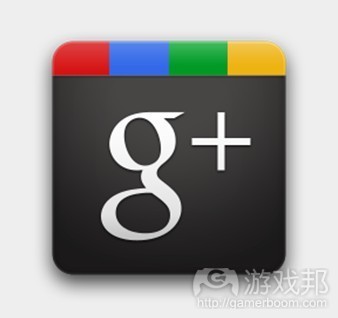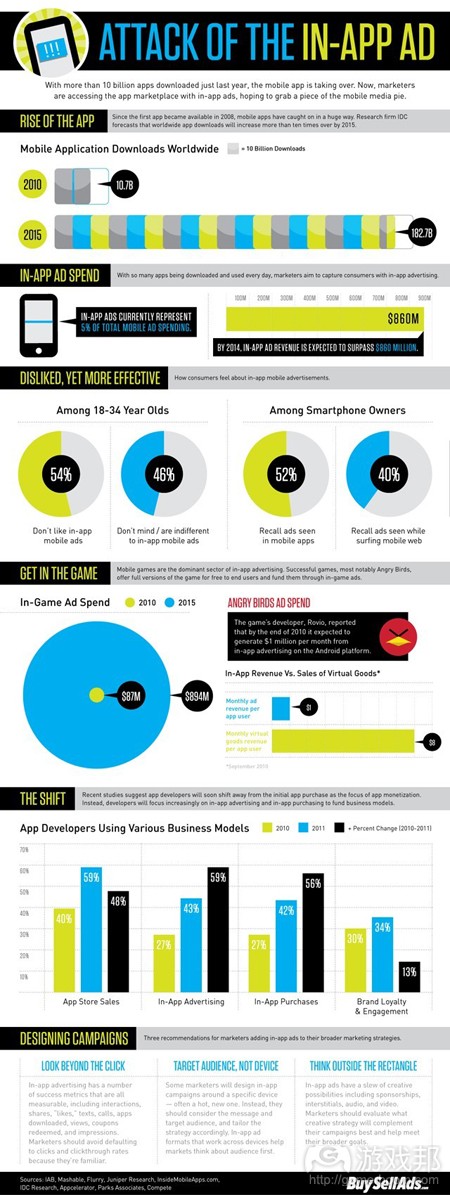每日观察:关注谷歌社交网络Google+未来走向(7.18)
1)据Engadget知情者从Google+最近发布的源代码中发现,Google Games项目很可能确有其事;而TechCrunch则从同样的源代码中发现了一个直接导向官方版Google Games标志的链接,另外还有细心观察者指出这些代码传递了一些关于社交游戏服务的信息:
•/_/games/getGameFriends
•/_/games/getActivities
•/_/games/postToStream
有不少人认为,从谷歌年初时招聘游戏项目相关人员,以及向Zynga等无数Facebook游戏开发商投资的传闻,再加上之前收购社交游戏公司Slide等迹象来看,Google与Facebook的社交游戏平台大战很可能即将拉开序幕。
2)以色列初创企业Overwolf最近为《魔兽世界》、《使命召唤》等硬核PC游戏推出了社交层服务,支持玩家免费下载该应用,然后在无需退出游戏的情况下通过Facebook、Twitter和Skype等社交服务晒出自己的成就等内容,而且还支持玩家在游戏中发送邮件、浏览网页,并且可将自己录下的视频片段上传至Facebook等社交渠道。
有人认为,从美国动视之前针对《使命召唤》推出社交网络Call of Duty Elite,以及Xbox 360的跨游戏社交功能中可以看出,硬核游戏与Facebook游戏之间的界线将更加模糊,Overwolf这类服务还只是一个开端,“社交游戏”的定义迟早会发生变化。
3)Ancestry.com创始人Paul Allen最近发布报告指出,用户已超过1000万的社交平台Google+约有33%的女性用户(游戏邦注:这是7月14日数据)。
也就是说,Google+目前仍是一个以男性为主导的社交网络(游戏邦注:SocialStatistics与FindPeopleonPlus这两者的调查数据显示出了更严重的倾向,前者的男女用户比例为90:10,后者则是75:25)。
Allen数据显示,在7月4日当天,Google+的女性用户占23%,到7月14日,这一数据达到33.6%。观察者认为,在Google+的宣传视频中唱主角的是女性群体,从这一点似乎可以看出Google+有意锁定女性用户,但为何女性用户比例明显低于男性用户,这一点颇为令人费解。
4)微软Windows Phone总裁Andy Lees最近声称 ,他认为手机硬件价格将继续下降,每部手机售价将以100美元为准。他表示今天的手机售价可以降至200美元,明年一部运行Windows Phone 7操作系统的智能手机售价很可能下降到100至150美元(游戏邦注:如果以苹果iPhone定价为标杆,目前的智能手机行业售价标准就是200美元)。
TG Daily认为,Andy Lees传达的这一信息或许表明,微软有意以更低的硬件售价来推动手机应用销量,因为后者的利润明显更高。
据报道,诺基亚很可斥资1.3亿美元在全球范围推广其与微软联合推出的Windows Phone智能手机。目前在AT&T渠道售价最低的Windows Phone手机是49美元,而最新机型的售价则高达199美元。
5)尽管Google+乍一露面就获得大量积极响应,但仍有些悲观论者认为它会步入Goolge Buzz和Google Wave的后尘,不过谷歌趋势图的搜索分析信息却足以证明,用户已超过1000万的Google+绝非第二个Buzz或者Wave(见下图)。
观察者认为,谷歌或许已从Byzz遭遇隐私劫难以及Wave无疾而终的失败中汲取教训,因此全力打造了Google+这个便捷而令人舒心的社交服务项目。
6)法国游戏公司育碧于近日收购网页游戏开发商Owlient,以扩大公司在网页、社交网络和手机领域的游戏业务。
7)mashable最近发布的信息图表显示,应用内置广告目前占移动广告总投入的5%,预计这一比例在未来仍会不断上升。尽管18至34岁群体对此类广告极为反感,但比起浏览移动网站时看到的广告,这一群体中的多数人更容易对应用内置广告产生印象。
对应用开发者来说,这类广告是一个理想的创收选择。Rovio公司曾预测,《愤怒的小鸟》到2011年底仅在Android平台的应用内置广告每月收益就有望达到100万美元。(本文为游戏邦/gamerboom.com编译,如需转载请联系:游戏邦)
1)Here’s the official Google Games logo, thanks to Google+ source code
by Joe Osborne
Man, you can’t hide anything on the Internet anymore, can you? Okay, so we already knew that the Google Games effort is 100 percent happening, thanks to some nerdery at Engadget that found clues referring to it in the recently released Google+ (essentially Google’s answer to Facebook) source code.
However, in that same source code, TechCrunch has found a direct link to the official Google Games logo, courtesy of a tipster. Better yet, that tipster found some interesting bits of code that reveal what could be a social gaming service (as if it would be anything else):
•/_/games/getGameFriends
•/_/games/getActivities
•/_/games/postToStream
While none of this is particularly shocking, we’ll take all the confirmation of a worthy opponent to Facebook’s games platform we can get. And don’t think this will be some tacked-on feature to Google+. Earlier this year, the company posted a job offer specifically for its not-so-secret games project.
And before that, Google has reportedly invested in numerous Facebook gaming companies including Zynga–not to mention it has already acquired gaming talent like Slide. Will the ultimate social gaming battle be between platforms Facebook and Google rather than creators like Zynga and EA? Our bet is in on both, and we have ringside seats.(source:games)
2)Hardcore PC games become Facebook games in a cinch with Overwolf
by Joe Osborne
Well, sans the Neighbor Bars and arguably incessant gift sharing. Overwolf, an Israeli start up company and service, adds a social layer to existing hardcore PC games like World of Warcraft and Call of Duty. It does this through a free download that allows gamers to post their achievements and milestones in-game to social services like Facebook, Twitter and Skype without having to leave the game.
While GamePro notes that existing services like Steam and Raptr allow players to communicate in-game, Overwolf seemingly turns every hardcore game into, well, a social game. (Not to mention it has support for in-game email and web browsing as well.) But hardcore gamers have hardcore social tastes, so players can record video clips and post them to Facebook and other social channels, again, without leaving the game.
“Publishers are looking for ways to ignite the viral potential of online games, but integration has been difficult, especially with all of the demands of operating live titles,” said Overwolf CEO Uri Marchand. “We’re offering a way to add this functionality with zero effort required on the publisher’s side. We’ve been getting amazing feedback from gamers telling us they love Overwolf, and it’s a great way to engage friends and share their gaming life with their real lives, which has the effect of bringing more users into online games.”
With major companies like Activision releasing social networks for their own games like Call of Duty Elite–and Xbox 360 having cross-game social features since its launch–the desire to share is certainly there. And as publishers and start ups alike begin to notice, the lines between Facebook game and hardcore game continue to blur. Services like Overwolf are only the beginning, so it might not be long before the word “social game” becomes moot.(source:games)
3)Is Google+ Becoming More Female?
If you believe the “unofficial statistician” for Google+, the new social network isn’t nearly as male-dominated as previously reported.
Paul Allen, the founder of Ancestry.com and the man who released a report estimating that Google+ was about to reach 10 million users, says that the male-to-female ratio on Google+ is not as disparate as some reports, including those published by Mashable, have seemed. Instead, Allen’s latest figures show that 33% of Google+ users, as of July 14, 2011 are female.
To be clear, this still means that Google+ is still a male-dominated network (at least for now), but the breakdown isn’t as extreme as the 90% male, 10% female stat from SocialStatistics or the 75% male, 25% female stats from FindPeopleonPlus.
Allen’s methodology in estimating Google+ statistics varies from some other Google+ data sources.
This is how Mashable’s Stan Schroeder described the methodology earlier this week,He sampled a number of surnames from the U.S. Census Bureau data and compared it to surnames of Google+ users. By comparing surname popularity in the U.S. with the number of users on Google+ with each surname, he can guesstimate the percentage of the U.S. population that signed up for Google+. Finally, he calculated a ratio of U.S. to non-U.S. users to generate an estimate for the number of Google+ users worldwide.
We’re not sure how census data can be applied to gender, especially on a social network, but we’ve reached out to Allen for additional information on how his data was composited.
Still, Allen’s figures show that from July 4, 2011 through July 14, 2011, the male/female gap closed considerably. On July 4, 2011, Allen estimated that 23% of users were female. By July 14, 2011, that percentage was up to 33.6%.
In its own videos and marketing for the service, Google put a lot of emphasis on women, which to us, implies that women are a prime target for Google+.
In our own unscientific estimates, we’ve seen more women joining Google+ over the last few days than when the service first launched.
That leads us to our question — do you see more women joining Google+ in your own circles? What do you think it will take for the gender ratio to start to balance out? Let us know in the comments.(source:mashable)
4)Windows Phone president expects phone prices to drop to $100
Let the smartphone price wars begin.
Several news outlets are reporting that Microsoft’s Windows Phone President Andy Lees thinks hardware prices will continue to fall, making a $100 phone the norm.
“Today, they’re down to about $200, and next year, a smartphone that can run something like Windows Phone 7 will actually be down to $100 to $150,” Lees said.
At the Worldwide Partner Conference in Los Angeles this week, two more hopeful announcements were made about the Windows Phone.
Steve Guggenheimer, Microsoft corporate vice president in the original equipment manufacturer division, unveiled a new Samsung Windows Phone expected to be released later this summer. Previews of the Windows Phone 7 OS update, Mango, were also showcased.
The industry standard for smartphone prices has become $200, due in part to Apple’s pricing of the iPhone.
TG Daily has an interesting perspective – maybe Microsoft is using lower hardware prices and might look to make up the difference on app sales, which have a larger profit margin.
Cell phones are often loss leaders – sold at or below cost with the intention of making up the difference with licensing fees, service charges and app purchases.
Earlier this year, Microsoft partnered with Nokia for the world’s largest phone maker to run Windows Phone 7 exclusively on its smartphones. Nokia will reportedly spend $130 million on advertising worldwide to promote their Windows Phone line.
I looked at AT&T’s pricing on smartphones. For new phones, the cheapest smartphones are outdated Palm OS and BlackBerry units for free. The lowest price Windows Phone goes for $49, but the newest models still go for $199.(source:techflash)
5)Google+ is off to a much stronger start than Wave and Buzz [Data]
by Charles West
Google+ has been grabbing almost all the headlines since its launch three weeks ago, with most of it coming from lots of positive press. But believe it or not, there are still those who want to remain pessimistic because of Google’s failed ventures of the past (Google Buzz and Google Wave).
Well, I’m hear to tell you that the Buzz and Wave comparison should officially become moot. G+ is off to a much stronger start than Google Buzz and Wave, according to a Google Trend comparison of the services built from an analysis of search trends.
Discussing Plus’s growth, the man who first reported on this data, Razib Khan, wrote “It’s early yet, so I don’t think that Google+ has ‘peaked’ in terms of news or search by any means (if it’s successful).” He also added, “But it’s already surpassed [Google's earlier] two offerings.”
If you’ve actually had the chance to use Google’s new social networking service, this news shouldn’t be at all surprising. When it comes to the success Goog’s new project has garnered (recently announcing 10 million users), it’s pretty cool to actually see the data backing up what most Googlers assumed from the beginning.
As a consumer of Google products, I must say this is pretty impressive as to what the search giant has been able to achieve — considering the privacy disaster that was Buzz and the canceling of Wave. Thanks to the data, it should be crystal clear that Google has learned from its pass failures. Google Plus’s opt-in service is an easy and enjoyable process activating and adding friends to your circles.
What do you guys think about this latest trend data? Is this a trend that will continue to boom or is it still too early to determine? As always, leave your opinions in our comment section below.(source:androinica)
6)Ubisoft Buys Owlient — Core games developer Ubisoft has purchased web games developer Owlient. The acquisition is part of Ubisoft’s strategy to expand its games onto the web, social networks, and mobile spaces.(source: insidesocialgames)
7)The Rise of Mobile In-App Ads
by Jolie O’Dell
If mobile apps are all the rage, then mobile in-app ads are causing rage.
In one recent example, the popular franchise Angry Birds saw in-app ads added to its HD version, and fans and players were in an uproar over the change.
But like them or not, mobile marketers are turning more attention toward in-app advertising. Right now, in-app ads account for around 5% of mobile ad spending, and that number is only expected to rise over the next few years.
One of the reasons in-app ads are taking off is their effectiveness. In spite of the fact that the majority of 18-34-year-olds actively dislike mobile in-app ads, the majority will also be able to recall those ads at a higher rate than the ads they see while browsing the mobile web.
And for app makers, the ads are a good bet, too. After all, Angry Birds publisher Rovio says that by the end of 2011, it’ll be making $1 million each month from in-app ads on the Android platform alone.
While we’re hoping to see better in-app ads as the ecosystem becomes more sophisticated, it’s interesting to monitor in-app ads in today’s relatively nascent state.(source:mashable)













































 闽公网安备35020302001549号
闽公网安备35020302001549号